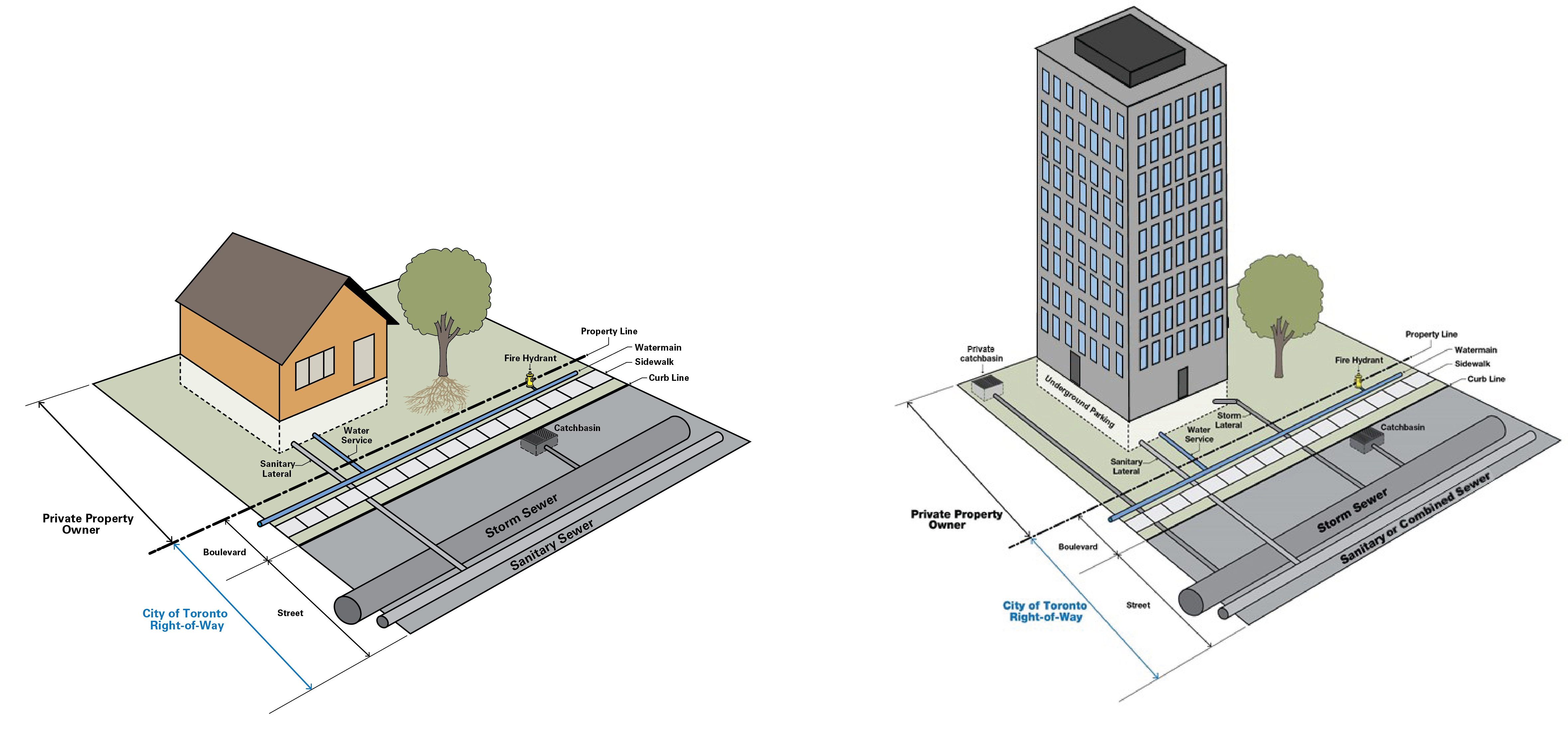
Everything outside of the City’s right-of-way is not part of the study and is the responsibility of the private property owner.
This study will look at improvements to the sewer and drainage system to be made within the City’s right-of-way or City property, such as parks and ravines.
Potential improvements may include:
City Council approved funding priority and availability is also a factor in implementing these sewer system upgrades.
Our streets are designed to carry stormwater flows that exceed the capacity of the storm sewer. Temporary ponding on streets is expected during major rainstorms. If the road has not drained two hours after the rain has stopped, residents are asked to contact 311.
Flooding issues could be the result of any upstream or downstream system overloaded capacity, bottlenecks and/or constraints. Upgrades are aimed at improving the overloaded system upstream or relieving the system downstream of the flooding location. These system upgrades will improve areas on adjacent streets and this is why works are not planned for every street.
Unfortunately, it is not as simple as making the pipes bigger. The challenge is which pipes, how big to make them and how it will affect other residents. Other constraints can include space availability, conflicts with existing or proposed future infrastructure, basement elevations, pipe depth and environmental impacts. The variability in the amount of rainfall and how fast it falls is so vast, that it is impractical to design a pipe system to capture it all. As well, City Council approved funding priority and availability is also a factor in implementing these sewer system upgrades.
Each property owner is responsible for the operation and maintenance of drainage systems on private property. Flooding may be caused by private property issues, including:
In these cases, sewer system upgrades would not lead to flooding on your property. Instead, fixing these property owner issues may resolve the issues you are experiencing.
Property owners are encouraged to hire their own licensed plumbers to investigate private property issues.
Property owners can help protect their properties from basement flooding by installing sump pumps and/or backflow valves. To cover this work, the City offers a homeowner subsidy of up to $3,400 per home for eligible applicants.
Flooding can occur for many different reasons. Backwater valves are designed to close the sewer line during periods of heavy rain to prevent water from entering your home. Property owners are encouraged to speak with a licensed plumber or contractor to determine whether the devices are installed correctly and at the right location (e.g. some basements have more than one floor drain).
Property owners are also responsible for proper and routine cleaning and maintenance of these devices to ensure they are in good working order. A correct type and CSA approved backwater valve is necessary to protect backups to basement floor drains.
Flooding on private property that is a result of poor surface drainage conditions due to low topography or poor lot grading is outside the scope of the study and is the responsibility of the property owner. Residents are encouraged to speak with a landscaper or contractor to discuss drainage issues and options for their backyards.
Discharge from a downspout should be contained on your property so as to not affect or cause damage to a neighbouring property. If your neighbour’s downspouts carry water onto your property, speak to your neighbour as a first step. You can also call 311 to report the problem.
All new housing developments must meet City standards to provide for sufficient stormwater drainage management before being approved.
While it is not mandatory for you to report instances of flooding or sewer grate blockages to the City, it is recommended that you contact 311.
City staff will review the problem and attempt to determine the source(s) of the flooding and include solutions if a system deficiency is found. Remember to record the reference number provided to you so you may refer back to the work order to track the case.
